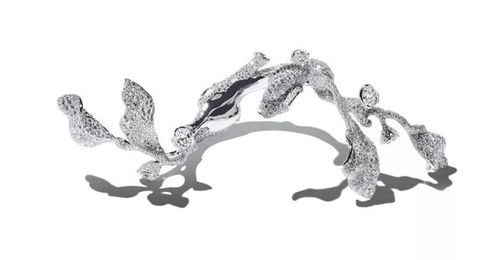In the tranquil world of angling, the mastery of fishing techniques can be the difference between a rewarding day on the water and a fruitless pursuit. One such critical aspect of fishing is the proper use of baits and the technique of tying them to your line. This article delves into the art of using baits effectively and provides detailed instructions on how to tie them securely and efficiently.
Understanding Baits: The Key to Attracting Fish
Before we delve into the intricacies of tying baits, it's essential to understand the types of baits available and how they work. Baits can be categorized into two main types: natural and artificial.
Natural Baits
Natural baits are those that are found in the environment where you are fishing. These include live bait such as worms, insects, minnows, and crustaceans, as well as dead bait like fish, shrimp, and clams. Natural baits are often favored by fish because they mimic the prey they would naturally encounter.
Live Bait: Live bait, such as worms or minnows, is highly effective because it is constantly moving, which triggers the predatory instincts of fish. To use live bait, you need to ensure it remains lively and wriggling. This can be achieved by keeping it in a well-aerated bait bucket or a small tank.
Dead Bait: Dead bait, while not as lively, can still be effective. It's important to rig the bait so that it appears natural in the water. For example, a fish can be fished on a bottom rig with a weight, allowing it to swim naturally in the water column.
Artificial Baits
Artificial baits are man-made lures designed to mimic the movement and appearance of natural prey. They can be very effective, especially in areas where fish are accustomed to artificial baits.
Soft Plastics: Soft plastics are flexible, lifelike lures that can be rigged in various ways. They can be used to imitate worms, crayfish, or other aquatic creatures. Rigging techniques such as the Texas rig, Carolina rig, and drop shot are commonly used with soft plastics.
Hard Baits: Hard baits include spoons, spinners, and jigs. These lures are typically more durable and can be used in a variety of fishing situations. Rigging techniques for hard baits depend on the type of lure, but they often involve securing the lure to the line with a swivel or a direct tie.
Tying Baits: The Art of Secure Rigging
The way you tie your bait to the line can significantly impact your fishing success. Here are some common methods for tying baits securely:
The Improved Clinch Knot
The improved clinch knot is a versatile and reliable knot for attaching most types of baits to your line.

- Pass the Line Through the Loop: Start by passing your line through the loop you've created with the tag end.
- Make a Half Hitch: Take the tag end and make a half hitch around the standing line.
- Form a Loop: Now, take the tag end and form a loop by passing it through the half hitch.
- Tighten the Knot: Moisten the knot with saliva or water and pull the standing line to tighten the knot. Trim the tag end close to the knot.
The Palomar Knot
The Palomar knot is a simple and effective way to attach baits to your line, especially when using braided line.
- Make a Loop: Form a loop with the tag end and pass the standing line through the loop.
- Create a Knot: Make a simple overhand knot with the tag end, leaving a long tag end.
- Tighten the Knot: Moisten the knot and pull the standing line to tighten it. Trim the tag end close to the knot.
Using Baits Effectively
Once you have your bait tied securely, it's time to consider how to use it effectively. Here are some tips:
- Understand the Fish: Different species of fish have different preferences when it comes to baits. Research the species you're targeting and choose the appropriate bait.
- Present the Bait Properly: The way you present your bait can make a big difference. For natural baits, mimic the natural movements of the prey. For artificial baits, experiment with different retrieves and retrieves until you find what works best.
- Be Patient: Sometimes, fish are not biting because they are not actively feeding. Be patient and wait for the right moment to cast or retrieve your bait.
In conclusion, mastering the art of using baits and tying them properly is a fundamental skill for any angler. By understanding the types of baits available, mastering the techniques for tying them securely, and presenting them effectively, you'll be well on your way to becoming a more successful fisherman. Happy fishing!












